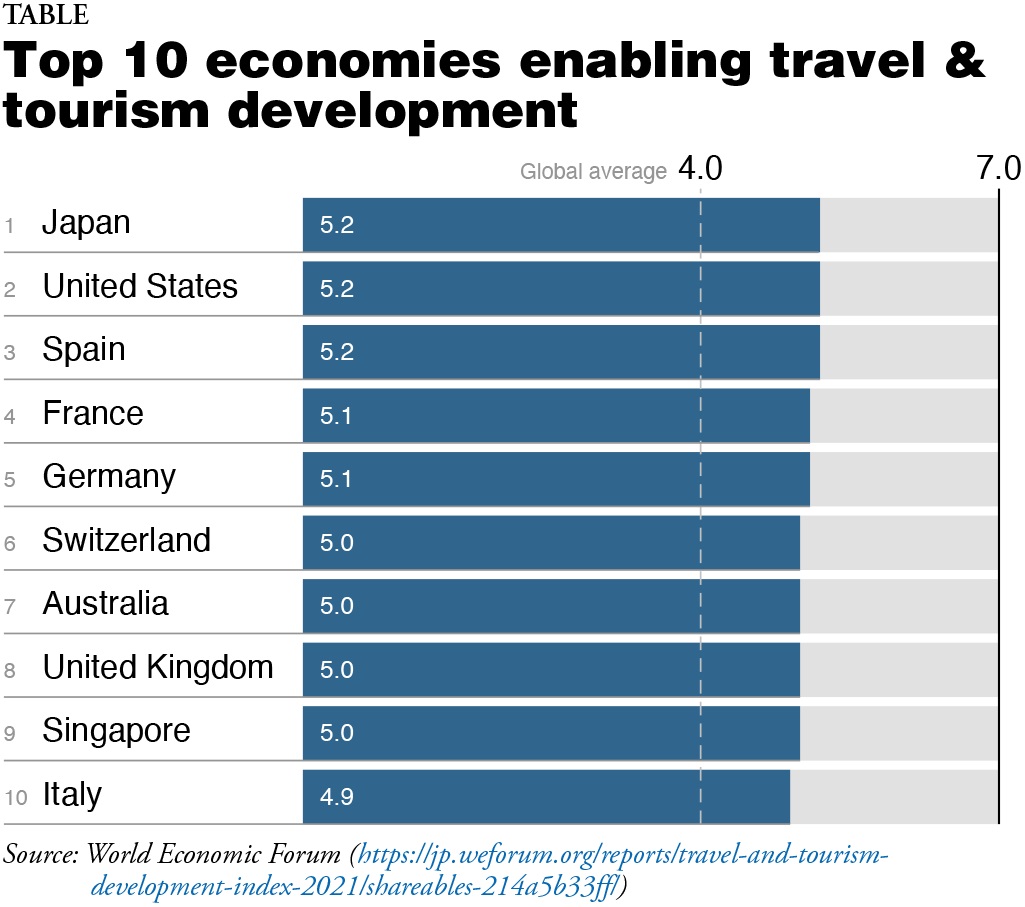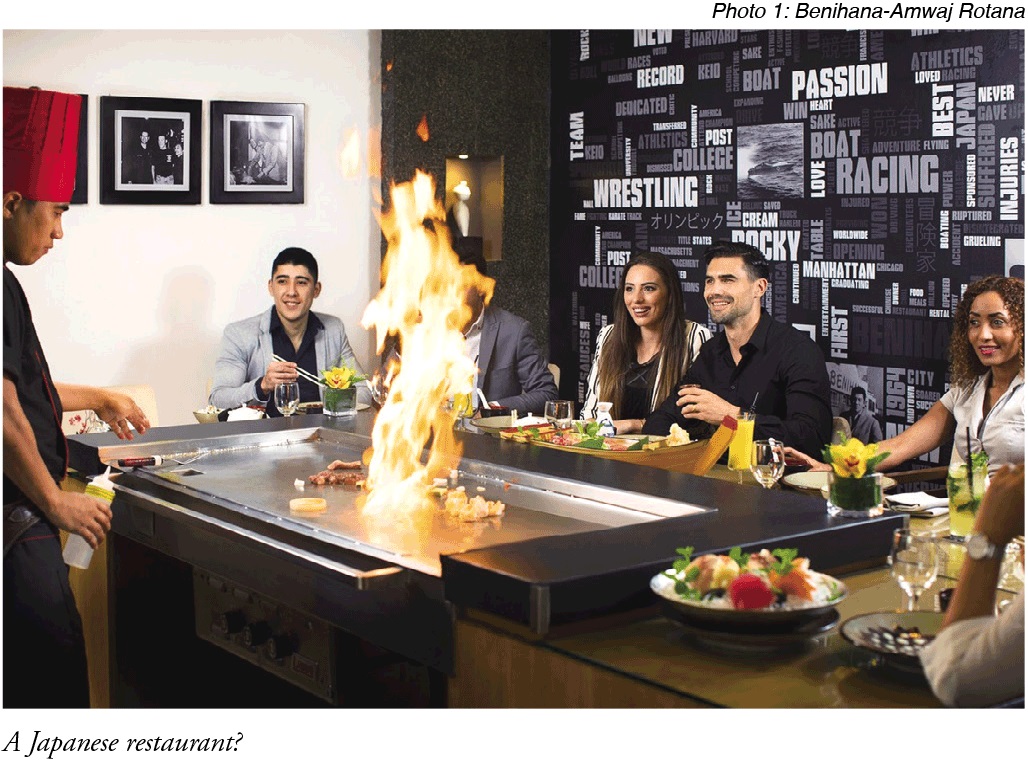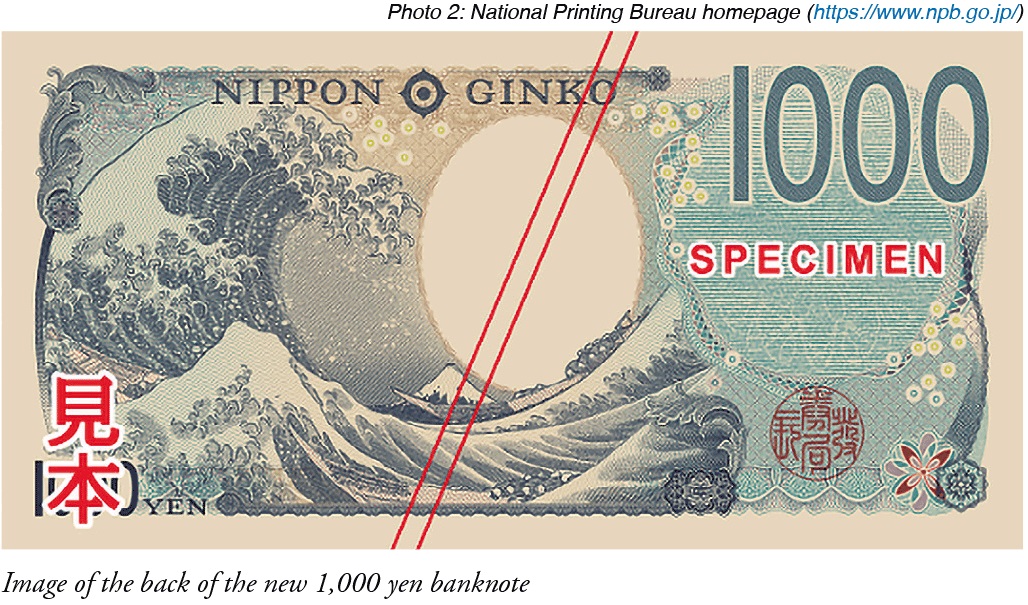HOME > Japan SPOTLIGHT > Article
From Cool Japan to Your Japan
By Benjamin Boas
Introduction

As Japan fully enters the post-pandemic world, its international popularity is in the news again. In February, Nikkei News Plus Nine reported a near 20-fold increase in inbound tourists to Japan. In December 2022, The Japan Times reported that the quintessentially Japanese genre of anime had gone into the mainstream, as lockdown-bound users of streaming services started watching Japanese cartoons for the first time. Even in the middle of the pandemic last year, The Yomiuri News reported that Japan topped the WEF Travel and Tourism Development ranking for the first time (Table).
But while Japan's "sudden" popularity might be making headlines in the Japanese press, these stories rarely make their way abroad. The reason why is obvious to every foreign fan of Japan: Japan has not suddenly become cool--Japan has always been cool. But despite its strong brand, the country often seems disconnected from its own success.

Since the global boom in consumption of Japanese popular culture over 20 years ago, many public and private entities in Japan have sought to both harness and develop this phenomenon of unexpected foreign interest, known within Japanese policy circles as "Cool Japan." But most of these efforts fall flat. Soon after the national government established Cool Japan policies at the beginning of the last decade, these efforts attracted wide criticism--from academics,1 the domestic2 and international3 media, and even major artists such as Takashi Murakami and Gackt, the very celebrities who embody what Cool Japan purportedly stands for.
Perhaps the most glaring example of the failures of the Cool Japan policy is the Cool Japan Fund, a public-private fund set up to open new markets for Japanese businesses. In the fiscal year ending March 2022, the fund posted a cumulative loss of 30.9 billion yen, out of nearly 107 billion yen invested since its inception in 2013. The Japanese Finance Ministry is considering shuttering the fund, on the advice of advisors who are quoted in meeting minutes saying that Japan has lost to South Korea in a "complete and decisive defeat."4
But this "defeat" is only in regard to the ability of government officials to harness the country's soft power. Japan's national brand itself is still strong. It can be expected that tourism numbers will continue to rise, as will international consumption of Japanese media and products. The point is that Japan succeeds not because of its official branding efforts but in spite of them. Official efforts tend to focus on a flawed paradigm: a product-out approach. This leads to failure because what drives unexpected foreign demand is not in Japan.
The term "Cool Japan" may only have a 20-year history, but unexpected foreign interest in Japan is a phenomenon older than its modern period. Over the years, this interest has taken different foci, which then dictated the image Japan had abroad at the time. Understanding this shifting image means seeing Japan as it is seen by its foreign fans, which can be difficult for domestic entities with an inward focus. But if Japan's establishment can let go of its own internal assumptions about how Japan is seen and instead appreciate real foreign perspectives, it could succeed in harnessing international interest to its full potential. It is time to move from "Cool Japan" to "Your Japan."
Your Japan
Take a look at Photo 1. Is it a photo of a Japanese restaurant? For most readers in Japan, the answer is clearly no. While the setting slightly resembles teppanyaki, few restaurants in Japan would be so extravagant as to set the table on fire. There are miso soup bowls, but the plates, glasses and other cooking equipment do not look particularly Japanese. The chef and patrons certainly do not appear to be from Japan. On the board in the back, there are a few Japanese characters but most of the orthography appears to be English. Moreover, the chef's outfit is not anything even closely resembling something from Japanese culture.

Yet, to many Americans, this photo would immediately make them think of Japanese food. This is because it is from the largest and most successful Japanese food chain in the world: Benihana. In 2010, the chain had over 5,000 employees and operated 116 stores in six countries, and boasted sales of over 35 billion yen. However, despite being the world's largest Japanese restaurant chain, the main foods served there are steak, chicken and shrimp. This is not how most Japanese restaurants serve food, but this is only natural since Benihana is an American restaurant. At the same time, to many Americans, it is the only Japanese restaurant they have ever been to.
Some object to this characterization of Benihana as "Japanese" since it obviously does not reflect the reality of Japanese food. While this might be obvious to someone who was born and raised in Japan, it is hardly obvious to most of Benihana's patrons, who were not. People who love Japanese things yet have never actually been to Japan are not aware of this reality on the ground. All they have is their image of the country. When most foreign consumers think of Japan, they are not thinking of the Japan that residents of Japan see every day. Instead, they are thinking of the Japan that they imagine, or "Your Japan."
Understanding Your Japan is key to marketing the real Japan successfully.
Japan's Image Shifts
Photo 2 is an image of the back of the new 1,000 yen banknote. It depicts the 19th century Hokusai woodblock print "The Great Wave off Kanagawa," possibly the most reproduced image in all of art.5 When it comes into circulation, it is likely to be a hit on international social media. This is because, more than any other image, it represents Japan to the world.

The existence of the Great Wave makes it easy to see that Japan's global popularity is longstanding. But while Japan's appeal has always existed, the specific element of this appeal has been shifting considerably since the time of the Great Wave's popularity.
In the 2010s, Japan's ever-increasing inbound tourism numbers were proof of its international appeal. But at the turn of the millennium, much attention was paid to Japan's emerging soft power, in the form of anime and games. Going back earlier, in the 1980s the Sony Walkman represented the wave of high-quality consumer electronics that had Japan poised to be "number one" economically. Even before this, Japan was famous for its philosophy and religion in the 1950s, thanks to the efforts of D. T. Suzuki to spread Zen Buddhism. Several decades before Suzuki, Inazo Nitobe made the term "Bushido" world famous around the turn of the millennium, as the West remarked on Japan's formidable military strength. Before this, of course, woodblock prints by Hokusai and other artists were all the rage amongst artists in Europe. But even this is not the first global boom in Japanese popularity, as at the same time Japanese circus acrobats performing under the name "The Imperial Japanese Troupe" were attracting large crowds in San Francisco and London.
At a glance, none of these booms have much to do with one another. Circus arts have little in common with the Sony Walkman. And Bushido has little in common with anime. The only thing connecting all these Japanese booms is that they were based on a shifting foreign image of Japan.
Forgetting My Japan
Harnessing Your Japan means being aware of Japan's current image abroad. From a branding perspective, Japan is smart to brand its own currency with the image most associated with the country. On the other hand, trying to promote Japanese traditional circus arts would not attract as much attention, since these acts are no longer popular outside of Japan. And while promoting Japanese animation would be effective now, it would not have been in the 1950s since anime was not popular abroad yet.
Ultimately, because Your Japan is based on an image, it is ephemeral and ever changing. Perhaps because of this, Japanese audiences show great interest in engaging with the idea of how Japan is perceived abroad. There are television shows about Japan's appeal abroad, like "Why Did You Come to Japan?" and even awards, like the Cool Japan Award. But for the most part, all of these are made by Japanese people, in the Japanese language, to appeal to other Japanese people. They are not for the outside world. These domestic, inward-facing perspectives can be described as "My Japan"--Japanese entities' own view of themselves.
There is nothing necessarily wrong with messaging from a My Japan perspective. In fact, efforts like the above likely lead Japanese people to buy more Japanese products and engage in more domestic tourism. However, My Japan domestic messaging should not be confused with actual Your Japan international messaging. If shows that claim that "foreigners love Japan" and "this is what foreigners think is cool" are simply translated and shown to international audiences, this is inefficient at best, and at worst will be considered insulting. It is therefore necessary to separate domestic messaging from international messaging.
For example, 2008 saw the selection of Japan's first "Anime Ambassador," the well-known robot cat Doraemon. That same year, a representative of the Japanese government addressed a crowd of over 10,000 at the popular American anime convention, Sakura-Con. He greeted the crowd with a hearty ohayou gozaimasu and they responded in kind. And then, grinning, he turned to put something on his face. When he resumed facing the crowd, he was wearing a Doraemon mask. The reaction was muted.
The reason why is simple: very few Americans knew who Doraemon was. Because Doraemon media had not yet been translated into English, even passionate anime fans were not familiar with him. This is an unfortunate but typical example of "My Japan" thinking, when officials confuse their vision of how Japan appeals to the world with how Japan appeals to the world in reality.
Nakano's Inability to Let Go
Businesses often have a vision of how they want the international world to see them. Then they try to set up their marketing with the goal of spreading this perspective to their clientele, assuming that their target market will eagerly accept this "lesson." Unfortunately, this hardly ever works. But it is nevertheless extremely common within the tourism industry in Japan, including in the ward of Nakano, within the Tokyo metropolis.
Tokyo's Nakano Ward has many attractions. It has a large concert hall that once hosted famous reggae singer Bob Marley, beautiful parks such as Tetsugakudo Park, and some spectacular temples, like Arai Yakushi. But most tourists--international and domestic--do not think of Nakano when they consider which place in Tokyo to visit. Nakano may have many attractions, but little about the ward is genuinely capable of drawing attention from international tourists. Nakano has great parks, temples and history, but so does every other major neighborhood in Tokyo. Promoting any of these destinations to tourists is unlikely to be effective. No tourism entity could in good conscience recommend the temples and shrines in Nakano over the Meiji Shrine or Sensoji.
On the other hand, if a tourist specifically wants to experience a half-day in one of the most unique shopping centers on Earth, Nakano is the perfect place to go. Nakano Broadway and its four floors of idiosyncratic subcultural and artistic stores is genuinely special. Half a century ago it was Tokyo's premier shopping and residential complex but now it is known as a Japan nerd's paradise, making it unlike any other place in Tokyo or the world. It is also easily accessible from the station, which itself is only one stop away from Shinjuku on the convenient Chuo line.
The best way to get foreign tourists to go to Nakano is to make sure they know about Nakano Broadway. In fact, it might be the only way to attract a foreign tourist to Nakano. Yet many business owners within Nakano are hesitant to promote Nakano Broadway because they have mixed feelings about becoming associated with geeky subcultures. The many shopping streets that surround the facility contain restaurants and shops that have nothing to do with these subcultures. Some of the proprietors want tourists to visit their shops only because they are interested in their shops and not because they are on the way to or from Nakano Broadway. The irony is that without the existence of Nakano Broadway, practically no foreign tourists would ever come near any of those stores.
While it is understandable that many businesspeople are uninterested in an association with geekiness, this is a self-defeating attitude. As long as Broadway exists, these businesspeople will necessarily be associated with its image since it is the area's top tourism destination for foreign travelers. Denying this truth is to give up any chance to take advantage of the brand. While it is unproductive to attempt to persuade foreign consumers to avoid Broadway in favor of an alternative destination within Nakano, there is plenty of opportunity for businesses in the area to take advantage of the traffic Broadway generates.
Many in the Nakano business community express a wish that foreign tourists would see Nakano Ward as more than just the home of Broadway. This sort of thinking skips a step: understanding what it is that drives foreign tourists to come to Nakano at all. After all, there are many other parts of Tokyo that get even less tourism than Nakano, which lacks a major hotel near its main train station. No tourist is going to take a long train trip to visit a far-off place, if everything there is similar to what can be seen at home. What gives Nakano potential as a tourism destination is its proximity to central Tokyo and its unique shopping center. While it may have many other attractive qualities, these two are the most important for attracting inbound tourism.
To be clear, once tourists actually arrive in Nakano, they will probably visit facilities outside of Broadway, such as the aforementioned parks and restaurants. But tourists have to be interested in coming first--and promoting Broadway is the most effective way to ensure this. As it is, the ward remains reticent about incorporating the center into its larger brand and this is made very clear by the lack of any large sign in the train station pointing the way to the area's biggest tourist destination. Nakano has the potential to attract many more tourists, but a necessary first step to doing so is to accept and understand how it is seen by its clientele.
Making Room for Your Japan
Nakano Ward is not the only entity in Japan that has difficulty seeing itself through foreign eyes. When I talk about the need to accept foreign views of Japan, I often encounter resistance. Government bureaucrats and businessmen question the need to consider foreign views since they believe that their views of Japan are more accurate and thus more effective in promoting Japanese products and services. In a 2016 interview, Cool Japan Fund CEO Nobuyuki Ota rejected the need to consult the opinions of his foreign customers, explaining that "...the idea of localizing is against our branding principles."
In some sense, Oda is right. Japan's culture would not exist without the Japanese people who create it. Diluting Japanese quality to suit foreign tastes is a poor way to build Japan's brand of uniqueness. However, selling and marketing a product or service is not the same thing as crafting it. No large corporation tasks its manufacturing team with selling a product. That is the sales team's job. Although it may be important for the sales team to understand a product, it is more important for them to understand what customers will buy. Likewise, Japanese entities must learn to craft high-quality messaging that matches their high-quality products and services.
Applying "Your Japan" to Government's Approach
Ultimately, introducing Your Japan and the necessity of understanding and targeting foreign perspectives will require a top-down reorganization of the government's efforts to promote the country. This would be best done in the form of a new agency, the Your Japan Agency. Anything less risks repeating the same aforementioned mistakes, as the government continues to confuse Your Japan with My Japan.
This new agency must have three crucial qualities. First, it must be independent so that it is free of inter-ministerial conflict and siloism. Currently, Cool Japan policies are ostensibly coordinated by the Cabinet Office and executed via various ministries and agencies, but this is often ineffectual because each organization is beholden to its own internal restrictions and incentives. A fresh organization free of these with strong leadership has the potential to create the change that the country needs.
Second, the Your Japan Agency must be staffed with a diverse range of communication professionals with expertise in their target markets. Much of Japan's current promotional strategy is hampered because it is executed by lifetime bureaucrats. These officials often have adequate English skills, but limited knowledge of how to create professional, natural messaging that can be seamlessly consumed by the audiences Japan hopes to engage. Selecting and managing this staff will have to be done by a senior communications leader in Japan, such as former Prime Minister Shinzo Abe's English-language speechwriter Tomohiko Taniguchi, or former Japan Digital Agency chief Yoko Ishikura.
Finally, the Your Japan Agency must be focused primarily on outreach efforts to organizations that already have an established track record in engaging target audiences. The national government is not the right entity to interface directly with foreign consumers and tourists. Rather, it should take a support role, ensuring that leading international organizations can provide the high-quality experience that foreign customers expect.
With the above three elements, the Your Japan Agency will not only be an effective means of harnessing the country's brand power to great economic benefit, but it will also be able to target messaging to specific types of clientele. Currently, the hospitality industry in Japan is struggling with understaffing issues caused by low wages and prices, as well as overconcentration in the "Golden Route" areas of Tokyo and Kyoto. But both these problems solve themselves if greater effort can be made to encourage high-net worth tourists interested in visiting sites in the Japanese countryside.
As foreign consumers continue to return to Brand Japan, the country is faced with a significant opportunity to capitalize on soaring foreign interest. Japan will always be cool, but the potential for how much this is harnessed depends on the right efforts. Shifting from Cool Japan to Your Japan will be the key.
1 The End of Cool Japan, Mark McLelland ed., 2016.
2 Nikkei Asia, "Government weighs fate of floundering Cool Japan Fund," June 21, 2022.
3 Bloomberg, "Japan Is Cool But Has No Clue About Selling Itself," July 1, 2019.
4 The Straits Times, "Has Japan Lost its Cool Factor," Sept. 2, 2022.
5 ABC News, "Hokusai's wave: Is this the most reproduced artwork in history?", July 20, 2017.
Japan SPOTLIGHT May/June 2023 Issue (Published on May 10, 2023)
(2023/06/09)
Benjamin Boas
Benjamin Boas serves as Cool Japan producer for the Cabinet Office of Japan and is the author of From Cool Japan to Your Japan, CrossMedia Publishing, 2022.

Japan SPOTLIGHT

- Coffee Cultures of Japan & India
- 2025/01/27























